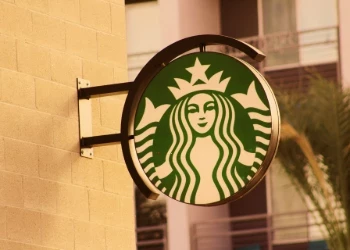Fueling CX with loyalty: The hidden power of first-party data
Add bookmark
First-party data in CX analytics can be quite significant. In an age where brands need to deliver stand-out customer experiences to succeed, customer loyalty is fast taking on a new role in the experience economy. It is no longer just about offering perks to improve customer retention; instead, loyalty programs are becoming a powerful gateway to gathering valuable customer intelligence.

Don't miss any news, updates or insider tips from CX Network by getting them delivered to your inbox. Sign up to our newsletter and join our community of experts.
In fact, there is a hidden return on investment (ROI) of loyalty programs that many brands don’t fully realize: It lies in the ability to generate rich first-party customer data. Using this data in the right way, organizations can create better, highly personalized customer experiences and deliver more impactful marketing campaigns that, in turn, boost customer acquisition, engagement and loyalty – ultimately fueling a fully connected CX engine.
Why first-party data is mission-critical
As more questions are raised over the efficacy of third-party cookies, organizations will increasingly want to collect information from their audience directly, via their own channels. At the same time, customers are much more aware and more selective of what information they are sharing. If they let a brand have personal information, they (rightly) expect a degree of control, relevance and clear value in exchange for their data.
Loyalty programs are becoming the perfect platform for such a trust-based, ongoing value exchange between brands and their customers.
Loyalty as a strategic data channel
To realize its potential, loyalty must move beyond pure transactions to true relationship-building. Done right, the most carefully designed loyalty programs can enable the collection of rich behavioral data – including purchases in-store, website visits and recent customer interactions. Strong intent signals can be identified from data such as clicks in the online store, customer wish lists and other engagements, while recorded customer preferences and historical feedback give brands additional contextual and emotional insights.
A great example of this is Sephora's Beauty Insider program, which employs a tiered structure to incentivize customer engagement through escalating rewards, including exclusive products and personalized experiences. The brand collects information like customers’ skin types, beauty concerns and product preferences by analyzing purchase histories, and preferences collected through quizzes and online behavior. This allows Sephora to deliver tailored product recommendations and targeted promotions, enhancing the shopping experience across channels. The program is integrated with Sephora's mobile app and online platforms, which ensures a seamless omnichannel experience and fosters increased customer loyalty and spending.
Starbucks' rewards program also integrates with its mobile app. Members can earn and redeem "Stars," encouraging repeat business. The app utilizes data analytics to provide personalized drink and food recommendations based on individual preferences and purchase history.
Five CX engines fuelled by loyalty data
With the first-party data generated through their loyalty programs, brands have a wealth of information at hand that can empower multiple business functions – from hyper-personalized communications with tailored emails, SMS and app messages based on each customer’s behavior and preferences, to precision advertising in retail media with closed-loop attribution for their own internal campaigns as well as partner campaigns.
The loyalty data can also be used to deliver gamification prompts and behavioral nudges, with reward mechanics that encourage an even deeper, habitual customer engagement. This is all about creating purposeful, ‘engineered’ moments to delight the customer, integrated intelligently within loops of trigger, action, progress and ultimately, a reward.
On-site and in-app personalization is another example, with brands curating real-time content and displaying products based on their customers’ loyalty profiles to ensure that what the customer sees is relevant, timely and impactful. By nudging the desired customer outcome on-site, brands can use their first-party data to take the customer on an optimized customer journey.
And finally, analyzing historical trends in the loyalty data can also help brands to deliver a predictive customer experience, forecasting customer behavior by anticipating churn, re-orders and upsell or cross-sell opportunities and acting on them.
Boots UK exemplifies the integration of loyalty data to drive customer experience and business growth. Through its Advantage Card program, Boots delivers hyper-personalized communications via its app and email, tailoring offers based on individual shopping behavior. The launch of Boots Media Group enables precise internal and partner campaigns, using loyalty insights to drive closed-loop retail media performance. Gamification features, like “Play & Win,” encourage repeat engagement and behavioral nudges, while the app and website serve personalized content and promotions based on loyalty profiles.
Beyond personalization, Boots employs predictive analytics to forecast customer behavior, allowing timely, data-led interventions. This integrated approach demonstrates how loyalty, when embedded across business functions, becomes a strategic driver of both customer value and commercial outcomes.
Building a loyalty-driven CX culture
As these examples show, loyalty is not a side tactic – instead, it should be the core of your customer understanding. To make sure customer loyalty becomes an enterprise-wide strategic asset, organizations should ensure they enable cross-functional data integration, a single customer view and outcome-based measurement beyond redemption. If these critical success factors are met, then loyalty can become a horizontal function that supports all other marketing and advertising verticals.
With first-party data as the fuel, CX is the powerful engine. Brands that listen, personalize and anticipate in this way will lead the next era of growth.
Quick links:
- Top 30 contact center leaders to follow in 2025
- How Ericsson supercharged their NPS score
- 9 Ways rapid tech advancement is reshaping APAC customer expectations
Mrinalini Chowdhary is director, strategy & insights EMEA at Epsilon, specializing in loyalty, CRM, CX and gamification.
















